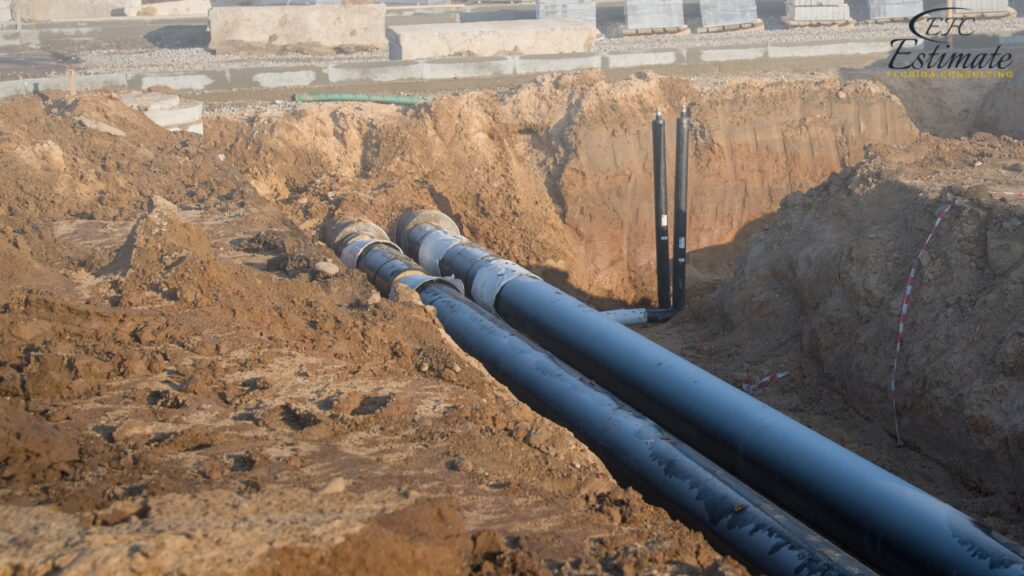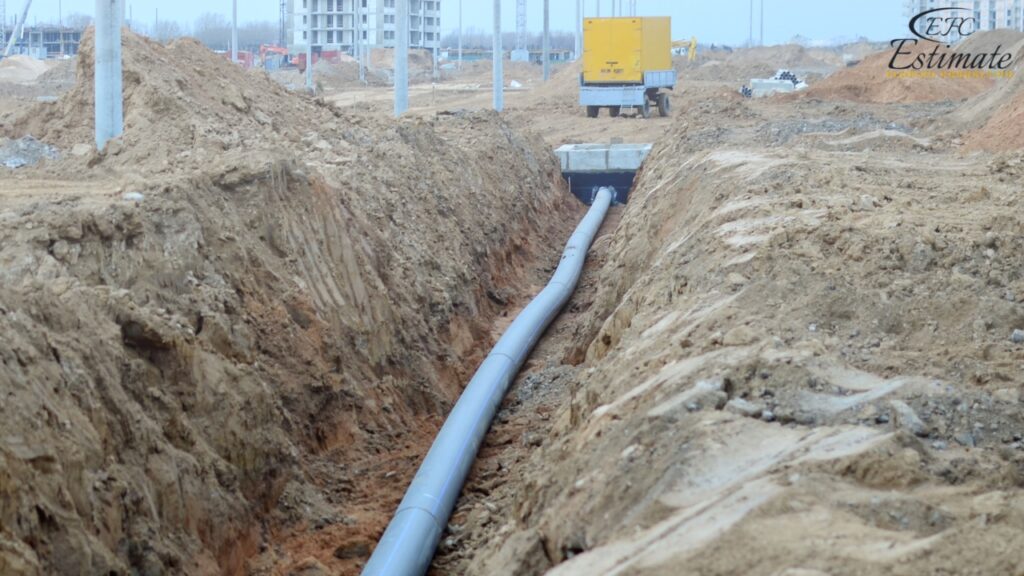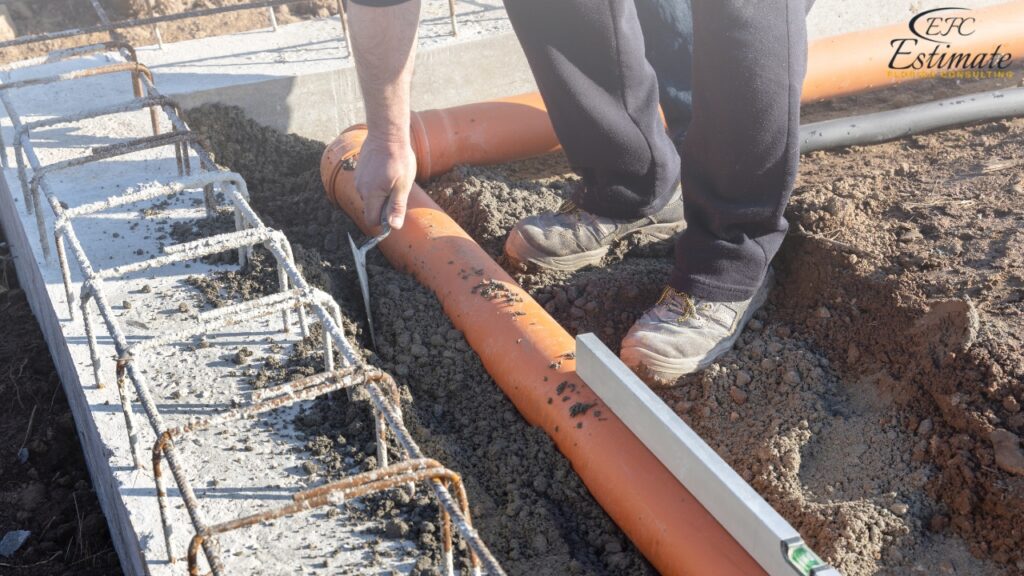How Much Does Sewer Line Installation Cost?
On average, installing a sewer line costs about $4,511, with most homeowners spending between $1,864 and $7,462. Having your home connected to a sewer system is essential for everyday activities like doing the dishes, washing your hands, taking a shower, and flushing the toilet. The sewer lines link your home to the main sewer drain, and it’s up to the homeowner to take care of their installation, repair, or replacement when needed.

Cost to Install a Sewer Line and Connections by Location
The cost of hiring a local professional to install a sewer line can vary based on where you live. Different cities have different pricing structures due to local water resources and the existing setup in your area.
Here are some examples of the average costs to install a sewer line in various cities across the country:
City | Average Cost |
Boston | $3,146 |
Miami | $2,288 |
Chicago | $3,003 |
New Orleans | $2,080 |
Detroit | $4,446 |
New York | $4,420 |
Portland | $5,408 |
Houston | $3,822 |
Los Angeles | $5,369 |
Dallas | $2,119 |
Cost to Hook Up to City Water and Sewer
Connecting your home to the city’s water and sewer line can cost between $650 and $26,000, depending on local regulations and requirements. The wide range in prices is due to the varying standards and prerequisites set by different municipalities.
If any modifications to your property are needed to facilitate the hookup, you’ll likely be responsible for covering those costs.
In some instances, your local government might help subsidize part of the connection expenses, but this support depends on regional policies and the project’s complexity. To get an accurate estimate of what you’ll need to pay, it’s best to contact your local municipality directly.
Sewer Line Installation Cost Breakdown
Several key factors influence the cost of installing a sewer line, including materials, labor, trenching, permits, and local regulations.
Sewer Line Cost per Linear Foot
On average, installing a sewer line costs between $65 and $325 per linear foot. These pipes, typically around 5 inches in diameter, run from your house to the main sewer drain beneath your yard.
Materials

To install a sewer line, you’ll need to purchase the necessary pipes to connect your home to the main sewer drain. The cost of new pipes ranges from about $3.90 to $26 per linear foot, depending on the type of material used. Here’s a breakdown of average costs per linear foot for different piping materials:
Piping Material Type | Average Cost per Linear Foot |
Cast-iron | $2.60–$13 |
Copper | $26–$39 |
PEX | $2.60–$6.50 |
PVC | $0.65–$6.50 |
Cast-Iron Piping
Cast-iron pipes cost between $2.60 and $13 per linear foot on average. Older homes often have cast-iron pipes, but this material is becoming outdated due to its susceptibility to corrosion. Newer materials like PVC and PEX are now more commonly used in modern homes.
Copper Piping
Copper piping costs between $26 and $39 per linear foot on average. Despite being the most expensive option, copper is a long-standing choice for home plumbing due to its durability and reliability.
Get 5 New Leads Next 7Days With Our System
- Multi-Family Building
- Hotel Building
- Hospital Building
- Warehouse Building
- High-Rise Building
- Shopping Complex
Polyethylene (PEX) Piping
Installing PEX piping costs between $2.60 and $6.50 per linear foot. PEX offers an affordable alternative to copper and provides better resistance to heat and cold compared to PVC, making it a versatile choice.
PVC Piping
PVC piping, the most budget-friendly option, costs between $0.65 and $6.50 per linear foot. PVC is both durable and economical, making it a popular choice for sewer hookups.
Labor
Hiring a licensed plumber to install the sewer line is essential. Labor costs for sewer line installation range from $39 to $321 per linear foot. Although it might be tempting to cut costs by DIY-ing, professional installation ensures the job is done safely and correctly.
Trenching
Trenching costs around $1,040 per 100 linear feet, depending on the length and depth required. This price typically doesn’t include removing landscaping or hardscaping before digging, so it’s wise to get a detailed quote beforehand. You might save on landscaping repairs if trenchless sewer repair is an option.
Backflow Preventer

To prevent backflow into your basement, you might need an overhead sewer, costing between $10,400 and $13,000 on average. These pipes run above ground to ensure waste doesn’t flow in the wrong direction.
Sewer Cleanout
A sewer cleanout costs between $650 and $2,600. These access points allow for clearing clogs or inspecting lines with a camera. A two-way sewer cleanout, which can cost up to $4,550, requires more work and potentially major excavation.
Permits and Regulations
Connecting to the city sewer line requires permits, costing between $520 and $2,080, with an average cost of around $1,300. Prices vary based on local regulations, and permits must typically be obtained before starting the project. If your plumber can’t handle the permits for you, make sure to get them in advance.
Housing Type and Sewer Line Installation Costs
The type of housing you live in can significantly affect the cost of installing a sewer line. Here’s a breakdown of how costs might be covered based on your housing type:
- Single-family Home: You are responsible for the entire cost of the sewer line installation.
- Twin Home: Both homeowners need to negotiate and decide who will cover the installation costs.
- Duplex: The property owner is responsible for covering the costs.
- Townhome or Condo: Your Homeowners Association (HOA) might cover the expenses, but this could lead to an increase in your HOA fees.
Additional Costs to Consider
When budgeting for sewer line installation, be aware of potential additional costs that could affect the total expense. Here are some common obstacles and their associated costs:
Obstacles
Obstacles can complicate the installation process, leading to higher costs. From removing trees to repairing driveways, some challenges are more expensive than others. Here are some of the most common hurdles you might encounter and their costs:
- Boulder Removal: $845 to $1,560 per boulder
- Tree Removal: $260 to $2,600 per tree
- Pavement Removal: $10.40 to $19.50 per square foot

Repairs
If you’re experiencing problems with your sewer lines, such as clogs or blockages, you might need to have them repaired or replaced. The cost for sewer line repair or replacement typically ranges from $1,820 to $5,330, depending on the severity of the issue.
Cost to Switch From Septic to Sewer
Switching from a septic system to a sewer system typically costs around $7,800. Here’s a breakdown of the components involved in making this switch and their average costs:
Component | Average Cost |
Permits | $1,300 |
Decommissioning | $650–$1,300 |
New Sewer Line Installation | $3,770 |
Trenching | $195–$260 per foot |
New Pipes | $1,365 |
Download Template For Plumbing Project Breakdown
- Materials list updated to the zip code
- Fast delivery
- Data base of general contractors and sub-contractors
- Local estimators

Conclusion
The cost of installing a sewer line varies significantly depending on several factors, including location, materials, and specific project requirements. On average, homeowners spend about $4,511, with typical costs ranging from $1,864 to $7,462. Essential for daily activities, sewer lines connect your home to the main sewer drain, making their installation, repair, and replacement crucial responsibilities for homeowners.
Costs can also differ based on housing type and additional considerations like trenching and permits. Switching from a septic system to a sewer system can be more expensive, averaging around $7,800. When budgeting, it’s essential to consider all potential obstacles and additional costs to ensure a smooth installation process.
FAQs
On average, installing a sewer line costs about $4,511, with most homeowners spending between $1,864 and $7,462. Costs can vary based on location, materials, labor, and project complexity.
Key factors include the location, materials used, labor costs, trenching, permits, and specific project requirements.
The cost can vary significantly based on where you live. Different cities have different pricing structures due to local water resources and the existing setup in your area. For example, the average cost in Boston is $3,146, while in Miami, it is $2,288.
Connecting your home to the city’s water and sewer line can cost between $650 and $26,000, depending on local regulations and requirements.
On average, installing a sewer line costs between $65 and $325 per linear foot. This includes materials and labor.
Additional costs may include obstacles like boulder removal ($845 to $1,560 per boulder), tree removal ($260 to $2,600 per tree), and pavement removal ($10.40 to $19.50 per square foot). Repairs to existing sewer lines can also range from $1,820 to $5,330.
Switching from a septic system to a sewer system typically costs around $7,800. This includes permits ($1,300), decommissioning the septic system ($650–$1,300), new sewer line installation ($3,770), trenching ($195–$260 per foot), and new pipes ($1,365).
Hiring a licensed plumber ensures the job is done safely and correctly, adhering to local regulations and preventing potential issues. Professional installation also guarantees the longevity and functionality of the sewer system.
In some instances, local governments might help subsidize part of the connection expenses. This support depends on regional policies and the project’s complexity.
Google Reviews



Process To Get Sewer Line Installation Estimate Report
Here I am going to share some steps to get your sewer line installation estimate report.
-
You need to send your plan to us.
You can send us your plan on info@estimatorflorida.com
-
You receive a quote for your project.
Before starting your project, we send you a quote for your service. That quote will have detailed information about your project. Here you will get information about the size, difficulty, complexity and bid date when determining pricing.
-
Get Estimate Report
Our team will takeoff and estimate your project. When we deliver you’ll receive a PDF and an Excel file of your estimate. We can also offer construction lead generation services for the jobs you’d like to pursue further.

